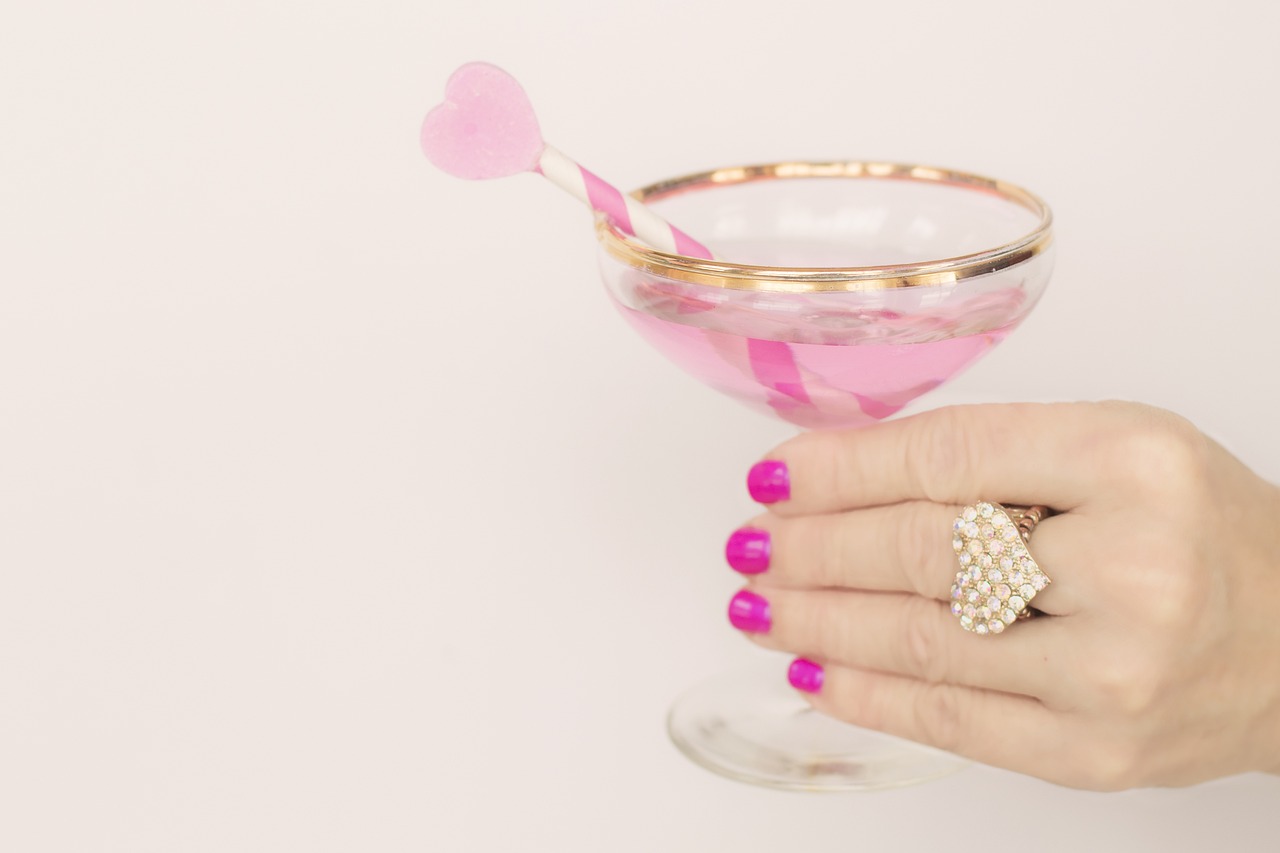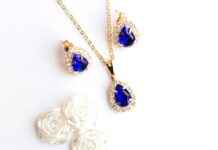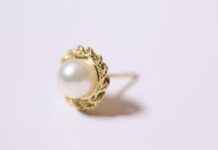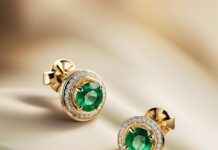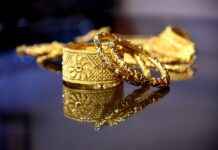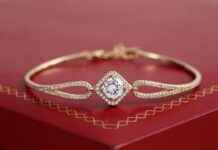This article delves into the fascinating history of engagement rings, examining their evolving symbolism and cultural significance. Understanding these aspects provides valuable insights into why engagement rings are so important in modern relationships.
The Origin of Engagement Rings
Engagement rings trace their roots back to ancient civilizations, where the practice of giving a ring as a token of commitment began. The earliest records suggest that the Egyptians were among the first to use rings in this context, believing that the circular shape represented eternity.
The Evolution of Engagement Ring Styles
Throughout history, engagement rings have transformed dramatically. Initially, they were simple bands made from materials like leather or braided reeds. Over time, these rings evolved into more elaborate designs, often featuring precious stones. This evolution reflects changing societal values and the growing importance of personal expression in relationships.
The Influence of Ancient Civilizations
- The Egyptian Tradition: Egyptians crafted rings from natural materials, symbolizing eternal love.
- The Roman Influence: Romans introduced more durable materials like iron and gold, emphasizing strength and permanence in commitments.
The Impact of the Middle Ages
During the Middle Ages, the use of gemstones became prevalent. Rings were adorned with intricate designs, which not only showcased wealth but also personalized the commitment between partners.
The Role of Diamonds in Engagement Rings
While diamonds are now seen as the quintessential stone for engagement rings, this wasn’t always the case. The 20th century saw a significant shift, primarily due to marketing campaigns that positioned diamonds as the ultimate symbol of love.
Cultural Variations in Ring Choices
Engagement ring preferences vary widely across cultures. While diamonds dominate in many Western societies, other cultures embrace different gemstones and materials, each carrying unique meanings.
The Symbolism Behind Engagement Rings
Engagement rings symbolize love, commitment, and the promise of a shared future. The circular shape signifies eternity, while the choice of gemstone can reflect personal stories and emotions.
Modern Trends in Engagement Rings
Today, engagement rings are more diverse than ever. Many couples prioritize sustainable and ethical choices, reflecting a commitment not only to each other but also to the planet. Additionally, custom and personalized designs are gaining popularity, allowing individuals to express their unique love stories.
Conclusion: The Enduring Legacy of Engagement Rings
Engagement rings carry a rich history and profound symbolism that resonate deeply in contemporary society. By understanding their evolution, couples can appreciate the significance of this cherished tradition in their own relationships.
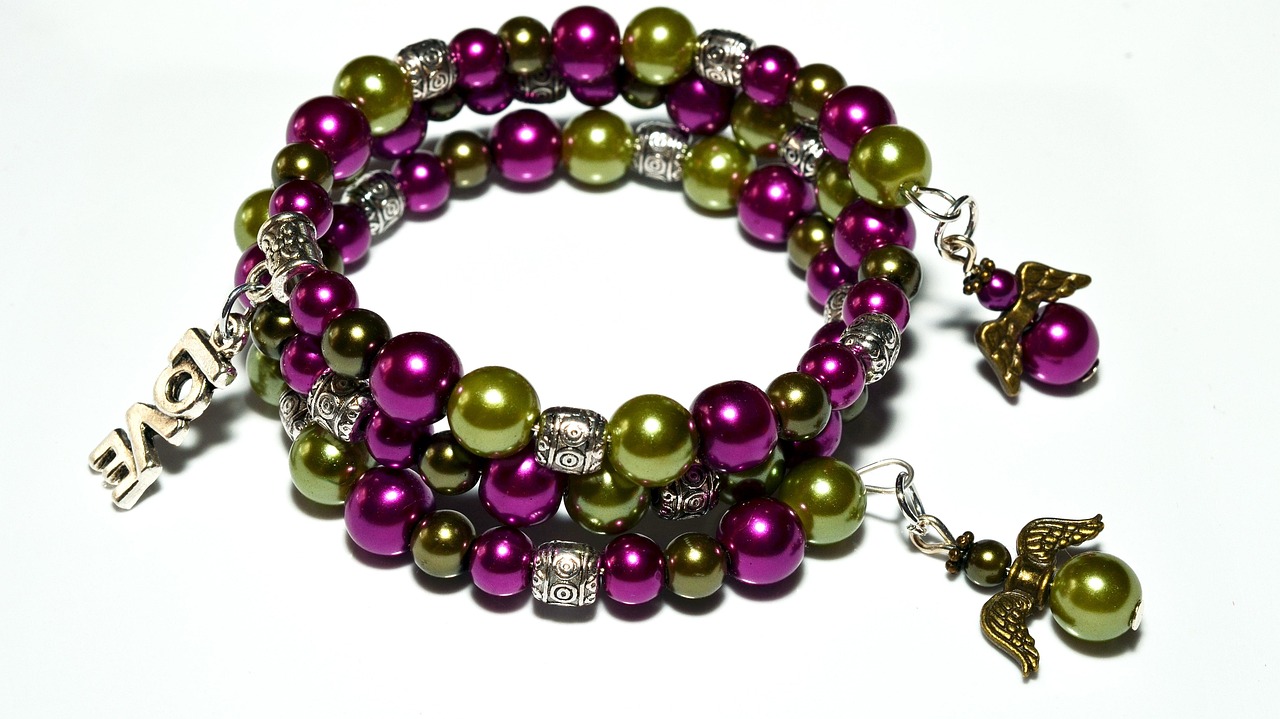
The Origin of Engagement Rings
is a topic steeped in history, tracing back to ancient civilizations where the concept of love and commitment was first symbolized through the exchange of rings. These rings were not merely ornamental; they held profound significance that reflected the values and beliefs of the societies that created them.
In ancient Egypt, rings were crafted from braided reeds and leather, symbolizing the eternal bond between partners. The Egyptians believed that the circle represented infinity, a concept that continues to resonate in the symbolism of engagement rings today. This practice was not only a statement of love but also a representation of the couple’s commitment to each other.
Meanwhile, the Romans introduced new materials like iron and gold to the engagement ring tradition. These metals were chosen for their durability and strength, mirroring the seriousness of the vows being exchanged. The Romans also popularized the practice of engraving rings with personal messages, adding a layer of intimacy to the symbol of commitment.
The Middle Ages saw a transformation in the design of engagement rings, as they became more ornate and often featured gemstones. This period marked a shift towards personalization, with couples selecting stones that held specific meanings or resonated with their unique love stories. For instance, sapphires were believed to symbolize fidelity, while emeralds represented rebirth and love.
As we delve deeper into the history of engagement rings, it becomes evident that these symbols of love have evolved significantly over time. Understanding their origins not only enriches our appreciation for these beautiful tokens but also highlights the enduring nature of love and commitment across cultures and eras.
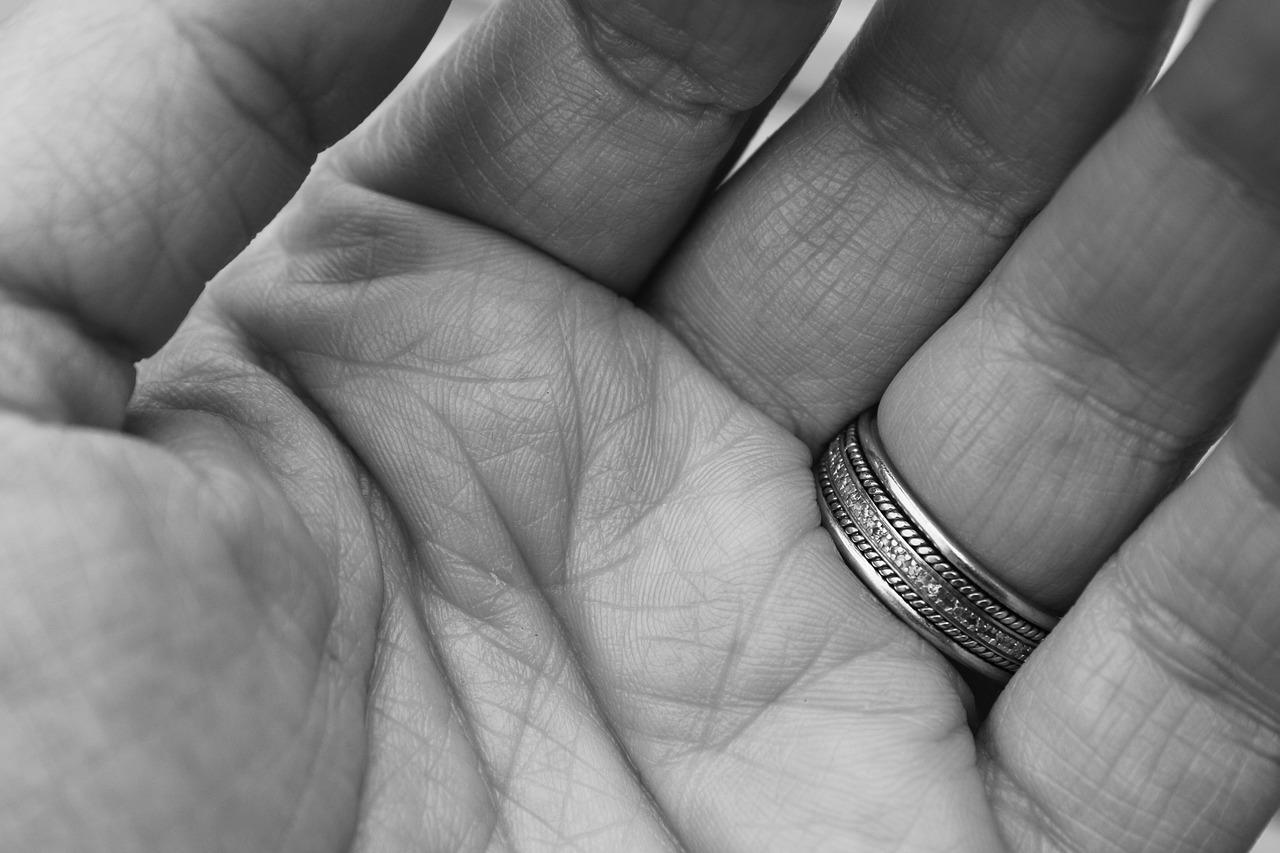
The Evolution of Engagement Ring Styles
is a fascinating journey through time, showcasing how these symbols of love and commitment have transformed. From their humble beginnings to the intricate designs we see today, engagement rings reflect not only personal taste but also cultural significance and historical context.
Engagement rings have come a long way since their inception. Initially, they were simple bands made from materials like braided reeds or leather, which were exchanged as tokens of commitment. As societies evolved, so did the materials and designs. The ancient Egyptians believed that the circular shape of a ring symbolized eternity, leading them to create rings that represented an everlasting bond.
In contrast, the Romans introduced more durable materials such as iron and gold. These materials not only conveyed strength but also indicated the seriousness of the commitment being made. The transition from simple to more elaborate designs began during the Middle Ages, when engagement rings often featured gemstones, adding a layer of personalization and meaning.
As we moved into the modern era, the introduction of diamonds revolutionized the engagement ring market. The famous De Beers marketing campaign in the 20th century positioned diamonds as the ultimate symbol of love, forever changing consumer perceptions. Today, while diamonds remain popular, there is a growing trend towards alternative gemstones and custom designs that reflect individual preferences and values.
In conclusion, the evolution of engagement ring styles is a testament to changing cultural norms and personal expressions of love. Each ring tells a story, and understanding this history can enrich the significance of the commitment it represents.
The Influence of Ancient Civilizations
has been pivotal in shaping many modern customs, including the tradition of engagement rings. These rings, which symbolize love and commitment, have roots that trace back to ancient cultures, notably the Egyptians and Romans. Their practices not only laid the foundation for the engagement ring tradition we know today but also infused it with rich symbolism and meaning.
In ancient Egypt, the concept of eternity was central to their beliefs, which is reflected in the circular shape of rings. The Egyptians crafted rings from materials such as braided reeds and leather, which were exchanged during marriage ceremonies. This practice emphasized the idea of a never-ending bond between partners, showcasing the significance of the engagement ring as a promise of fidelity and love.
Similarly, the Romans contributed to the evolution of engagement rings by introducing more durable materials like iron and gold. These metals represented strength and permanence, qualities that were highly valued in the institution of marriage. The Roman tradition of giving an engagement ring signified a formal commitment, and it was often worn on the fourth finger of the left hand, a practice that continues in many cultures today.
Both civilizations understood the importance of symbols in relationships. The engagement ring became a powerful representation of the couple’s commitment to one another, transcending mere ornamentation. As these ancient practices evolved, they laid the groundwork for the diverse and meaningful engagement ring traditions we see across the globe today.
In conclusion, the influence of ancient civilizations like the Egyptians and Romans has profoundly shaped the significance of engagement rings. Their practices not only established the tradition but also enriched it with layers of meaning that resonate through time, continuing to symbolize love and commitment in modern relationships.
The Egyptian Tradition
of engagement rings is steeped in rich symbolism and cultural significance. In ancient Egypt, the circle was a powerful symbol, representing eternity and the infinite nature of love. This belief was deeply embedded in their culture, influencing various aspects of their lives, including their marriage customs.
Egyptians crafted rings from materials readily available to them, such as braided reeds and leather. These materials were not only practical but also held deep meaning. The act of exchanging rings during marriage ceremonies was a profound ritual that signified the couple’s commitment to one another. The circular shape of the rings served as a reminder of their unending bond.
In addition to the physical representation of love, the Egyptians believed that wearing a ring on the fourth finger of the left hand was significant. They thought that a vein in this finger, known as the vena amoris, directly connected to the heart, further emphasizing the emotional connection between partners.
| Material Used | Symbolism |
|---|---|
| Braided Reeds | Connection to nature and simplicity |
| Leather | Strength and durability |
The significance of these rings went beyond mere decoration; they were seen as a binding contract between two individuals. The Egyptians understood that marriage was not just a personal union but also a social and spiritual commitment. This understanding laid the groundwork for future traditions surrounding engagement rings.
In conclusion, the Egyptian tradition of engagement rings highlights the importance of symbolism in relationships. Their belief in the circle as a representation of eternity continues to resonate in modern engagement practices, reminding us of the timeless nature of love and commitment.
The Roman Influence
The Romans significantly shaped the tradition of engagement rings, introducing materials that conveyed deep meanings and values. Among these materials, iron and gold were particularly favored, each symbolizing different aspects of commitment and relationship strength.
Iron, known for its durability and strength, was a representation of the unbreakable bond between partners. The choice of iron as a material for engagement rings highlighted the seriousness of the commitment being made. It was a declaration that the bond formed was not only profound but also enduring, capable of withstanding the challenges of life.
On the other hand, gold added a layer of richness and permanence to the symbolism of engagement rings. Gold has long been associated with wealth, prosperity, and eternity. Its lustrous appearance and resistance to tarnish made it an ideal choice for a ring that would symbolize a lifelong promise. The Romans believed that a gold ring could signify the value and seriousness of the relationship, making it a cherished emblem of love.
In Roman culture, engagement rings were often worn on the fourth finger of the left hand, a tradition that continues in many cultures today. This practice was based on the belief that a vein in this finger, known as the vena amoris or “vein of love,” directly connected to the heart, further emphasizing the idea of love and commitment.
Furthermore, the combination of iron and gold in engagement rings served as a powerful reminder of the balance between strength and wealth in a relationship. It reflected the notion that a successful partnership requires both emotional resilience and the ability to provide for one another. This duality has influenced modern engagement ring designs, where couples often seek rings that not only represent their love but also their shared values and aspirations.
In conclusion, the Roman influence on engagement rings has left a lasting legacy that continues to resonate today. By popularizing the use of iron and gold, the Romans established a tradition that emphasizes the strength and permanence of love, shaping how we view engagement rings in contemporary society.
The Impact of the Middle Ages
During the Middle Ages, the significance of engagement rings evolved dramatically, reflecting the cultural and social changes of the time. This era, spanning roughly from the 5th to the late 15th century, saw a transition from simple bands to more elaborate and ornate designs, often incorporating gemstones.
As society became more structured and hierarchical, the engagement ring began to symbolize not just a promise of marriage, but also one’s social status and wealth. The use of precious stones such as sapphires, emeralds, and rubies became increasingly popular among the nobility, who sought to showcase their affluence and taste. These gemstones were often intricately set in gold or silver, creating stunning pieces that were not only beautiful but also meaningful.
This period marked a significant shift towards more personalized designs. Couples began to select rings that reflected their individual tastes and sentiments, rather than adhering to generic styles. The introduction of inscriptions within the bands became a common practice, allowing for a more intimate expression of love and commitment. These inscriptions often included dates, initials, or short phrases that held special meaning for the couple.
Furthermore, the rise of Christianity during the Middle Ages influenced the symbolism of engagement rings. The circular shape of the ring, representing eternity, aligned with the Christian belief in everlasting love and commitment. This spiritual aspect added depth to the engagement ring, making it a cherished token of devotion.
In conclusion, the Middle Ages played a pivotal role in shaping the engagement ring into a more elaborate and personalized symbol of love. The incorporation of gemstones and intricate designs not only enhanced their aesthetic appeal but also imbued them with deeper meanings, reflecting the values and beliefs of the time.
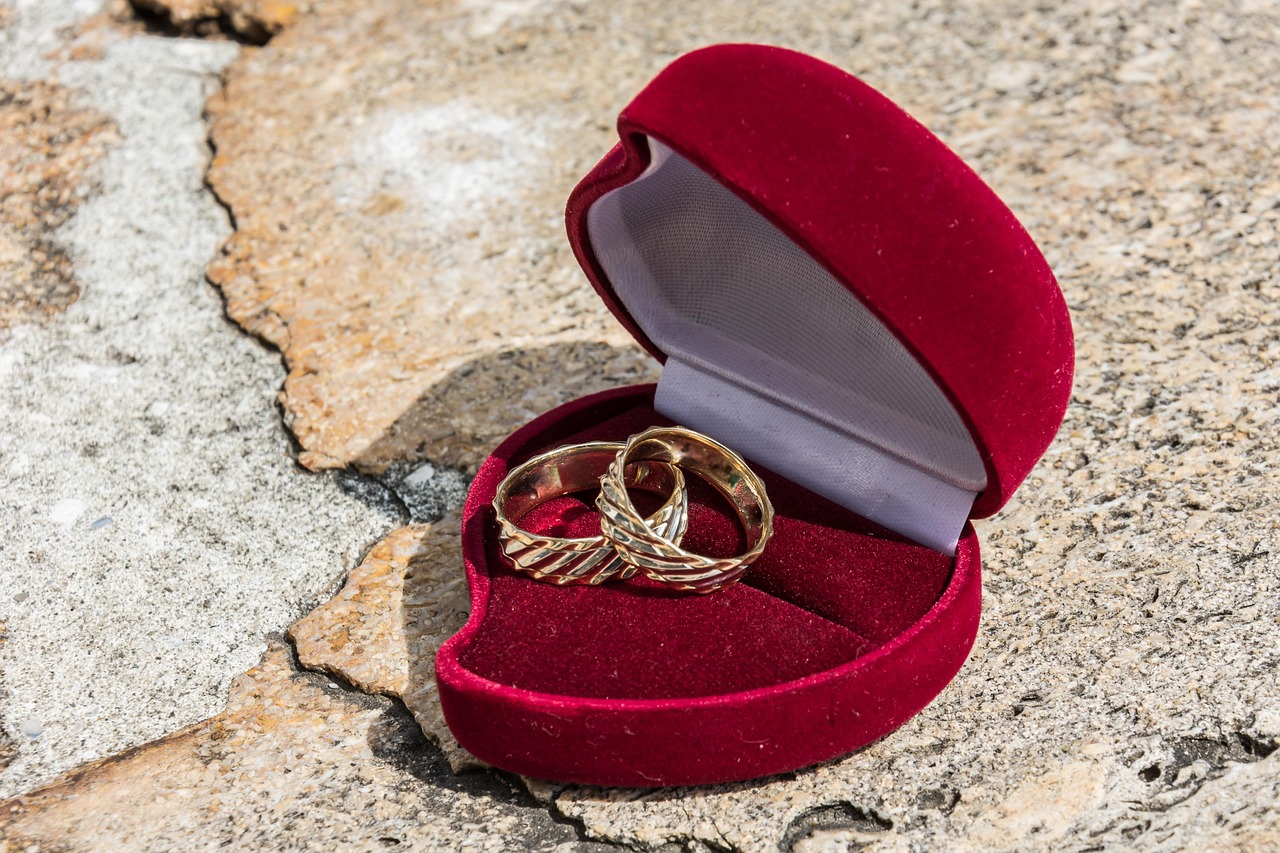
The Role of Diamonds in Engagement Rings
Diamonds have become the quintessential choice for engagement rings, symbolizing love and commitment in contemporary society. However, their rise to dominance is a relatively modern phenomenon influenced by various factors.
Historically, engagement rings made from different materials and gemstones have represented love and fidelity. Yet, the 20th century marked a significant turning point in the perception of diamonds. This transformation can be attributed to several key elements:
- The De Beers Marketing Campaign: In the early 1900s, the De Beers diamond company launched a groundbreaking marketing campaign that positioned diamonds as the ultimate symbol of love. The slogan “A diamond is forever” resonated deeply with the public, linking diamonds irrevocably with engagement and marriage.
- Hollywood Influence: The glamorization of diamonds in films and by celebrities further propelled their desirability. High-profile engagements, such as those of movie stars, showcased extravagant diamond rings, setting a trend that many aspired to emulate.
- Economic Factors: Post-World War II economic prosperity allowed more couples to afford diamond engagement rings. As disposable income increased, so did the demand for these luxurious symbols of commitment.
Additionally, the cultural significance of diamonds grew as they became associated with wealth and status. The perception that a diamond ring is a necessary component of an engagement solidified its place in modern traditions.
Today, while diamonds remain the most popular choice, there is a growing trend towards alternative gemstones and ethical sourcing. Couples are increasingly considering their values and personal stories when selecting an engagement ring, leading to a more diverse landscape of choices.
In conclusion, the rise of diamonds as the preferred choice for engagement rings is a multifaceted phenomenon shaped by marketing, cultural influences, and economic factors. Understanding this evolution helps couples appreciate the significance of their choice in the context of their unique love story.
The De Beers Campaign
In the 20th century, the landscape of engagement rings underwent a profound transformation, primarily influenced by the marketing strategies of the De Beers diamond company. This campaign not only popularized diamonds but also redefined them as the quintessential emblem of love and commitment.
Before this pivotal marketing initiative, diamonds were not necessarily the first choice for engagement rings. The notion of a diamond representing an everlasting bond was largely absent from cultural practices. However, De Beers recognized the potential to create a strong emotional connection between diamonds and romantic relationships. Through a series of clever advertisements, they positioned diamonds as a mandatory element in the engagement process, coining the famous phrase, “A diamond is forever.”
This slogan resonated deeply with the public, effectively embedding the idea that a diamond engagement ring was not just a piece of jewelry, but a symbol of eternal love. The campaign utilized various media, including print advertisements and celebrity endorsements, to emphasize that a diamond ring was the ultimate expression of devotion. As a result, sales skyrocketed, and the diamond engagement ring became a cultural norm.
Moreover, De Beers’ campaign also introduced the concept of minimum carat weight, suggesting that the size of the diamond was directly correlated with the depth of one’s love. This marketing tactic further entrenched the belief that a more substantial diamond equated to a more significant commitment, influencing countless couples in their purchasing decisions.
In conclusion, the De Beers campaign not only transformed consumer behavior but also shaped societal expectations regarding engagement rings. Today, the diamond remains a powerful symbol of love and commitment, a legacy rooted in a marketing strategy that forever altered perceptions.
Cultural Variations in Ring Choices
Engagement rings are not only a symbol of love and commitment but also reflect the diverse cultural backgrounds and traditions of couples around the world. While diamonds are often regarded as the standard choice in many Western cultures, various cultures embrace a wide array of gemstones and materials that hold significant meaning.
- Colored Gemstones: In many cultures, colored gemstones such as sapphires, emeralds, and rubies are favored over traditional diamonds. For instance, in Asian cultures, sapphires symbolize wisdom and nobility, making them a popular choice for engagement rings.
- Unique Materials: Some cultures incorporate unconventional materials into their engagement rings. For example, in Scandinavian countries, rings made from wood or other natural materials are gaining popularity, reflecting a connection to nature.
- Family Heirlooms: In many cultures, engagement rings are passed down through generations as cherished family heirlooms. This practice is particularly common in Jewish and Italian traditions, where the ring carries a deep emotional connection and history.
- Non-Traditional Choices: Modern couples are increasingly opting for non-traditional choices that reflect their personalities and values. This includes rings made from alternative metals like titanium or palladium, or even rings featuring unique designs that tell a story.
In conclusion, the choice of an engagement ring is deeply personal and often influenced by cultural traditions and individual preferences. Understanding these variations allows couples to select rings that not only symbolize their love but also honor their unique backgrounds and values.
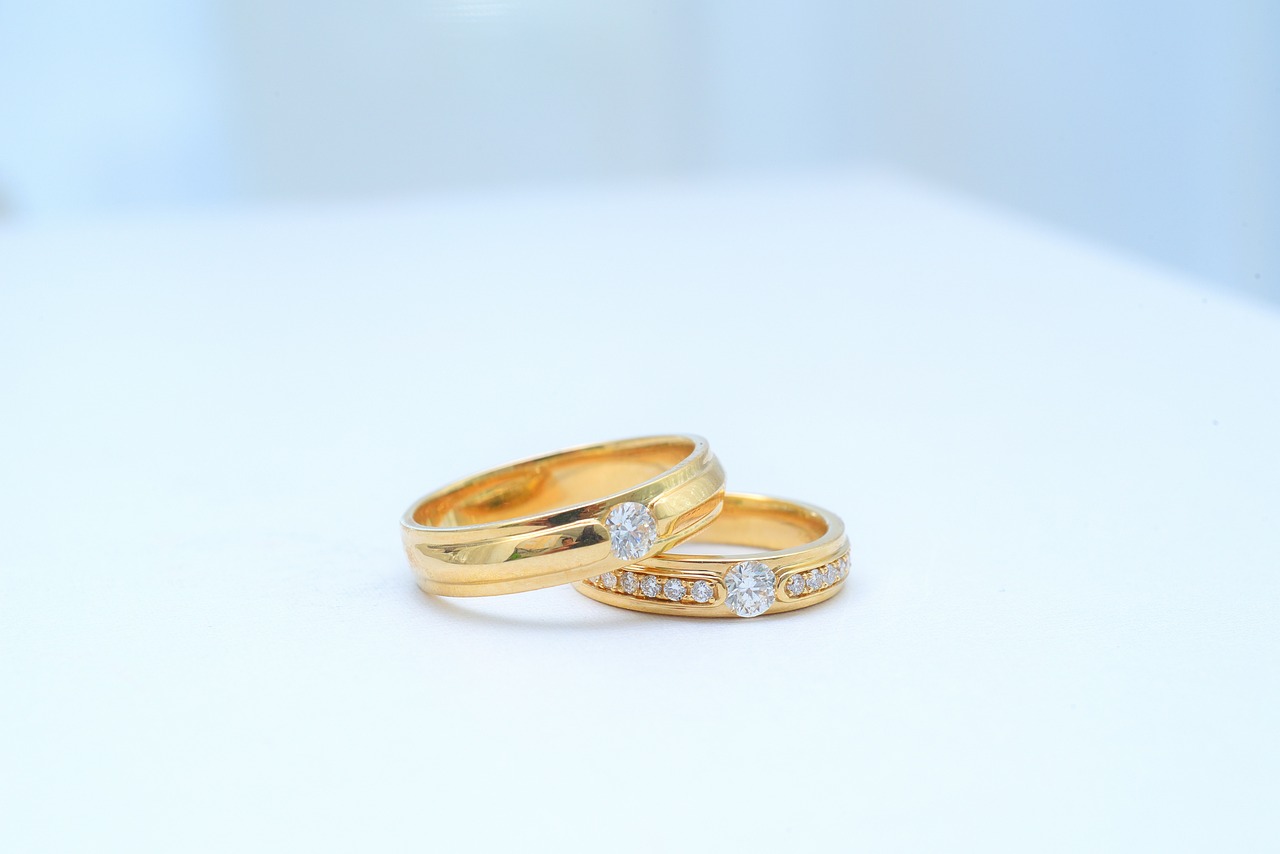
The Symbolism Behind Engagement Rings
Engagement rings are more than just beautiful pieces of jewelry; they embody profound symbolism that resonates with couples around the world. These rings not only signify a promise of love and commitment but also serve as a tangible representation of the journey two individuals embark on together.
The circular design of engagement rings is particularly significant. The circle has long been associated with eternity, reflecting the idea that love knows no end. This shape symbolizes an unbroken bond and a commitment that transcends time. When a couple exchanges engagement rings, they are not just making a promise for the present; they are pledging their devotion for a lifetime.
In addition to their shape, the choice of gemstones in engagement rings carries its own unique meanings. For instance, diamonds, often regarded as the ultimate symbol of love, represent strength and resilience. Other gemstones, such as sapphires, symbolize loyalty and fidelity, while emeralds convey hope and renewal. Each stone can tell a story about the couple’s relationship, making the ring even more special.
Moreover, the cultural context in which engagement rings are given can further enhance their symbolism. In some cultures, specific materials or designs are favored, each carrying its own historical significance. Understanding these cultural nuances allows couples to choose a ring that resonates with their shared values and heritage.
Ultimately, engagement rings are a powerful symbol of love, commitment, and the promise of a shared future. They encapsulate the essence of a couple’s journey and serve as a reminder of the vows they make to each other. As traditions evolve, the meanings behind these rings continue to deepen, making them a cherished element of relationships worldwide.
The Meaning of the Circle
The concept of the circle holds significant meaning, especially when it comes to engagement rings. This shape is not merely a design choice; it embodies deep symbolism that resonates with many. The circular form represents eternity, signifying a love that knows no end. Unlike other shapes that have corners or edges, the circle is continuous, reflecting the idea of an unbroken bond between partners.
Throughout history, the circle has been associated with various cultural beliefs and traditions. For instance, ancient civilizations viewed the circle as a symbol of wholeness and unity. This perspective is echoed in the way couples exchange rings during their engagement, marking the beginning of a lifelong journey together.
In addition to eternity, the circle also represents commitment. When a person accepts an engagement ring, they are not just receiving a piece of jewelry; they are entering into a promise of love and fidelity. This act signifies the intention to build a future together, reinforcing the idea that their relationship is a continuous journey filled with shared experiences.
- Symbol of Love: The circle is a universal symbol of love, transcending cultural and geographical boundaries.
- Representation of Unity: The circular shape signifies the unity of two individuals coming together as one.
- Endless Possibilities: Just as a circle has no beginning or end, so too does the love shared by a couple.
Moreover, the choice of materials and gemstones in engagement rings can further enhance the meaning of the circle. For example, a diamond, often set in a circular band, symbolizes strength and purity, adding layers of significance to the ring.
In conclusion, the circular shape of engagement rings is more than just an aesthetic choice. It is a profound representation of eternal love, commitment, and the promise of a future together. Couples choosing this timeless design are not only embracing a beautiful piece of jewelry but also a rich tradition filled with meaning.
The Significance of Gemstones
Gemstones have captivated humanity for centuries, not just for their beauty but also for their profound symbolism and emotional resonance. Each gemstone carries its own unique meaning, which can provide couples with a deeper understanding of their relationship and the significance of their commitment. By choosing a gemstone that reflects their personal story, couples can create a ring that is both beautiful and meaningful.
For example, diamonds are often associated with eternal love and strength, making them a popular choice for engagement rings. Their unmatched brilliance symbolizes the enduring nature of a couple’s bond. On the other hand, rubies represent passion and desire, making them an ideal choice for those who wish to convey a fiery love. The deep red hue of rubies evokes feelings of warmth and romance.
- Sapphires are known for their calming properties and symbolize loyalty and nobility. This gemstone is often chosen by couples who value trust and fidelity in their relationship.
- Emeralds symbolize rebirth and love, making them a perfect choice for couples who want to express a fresh start or a renewed commitment to each other.
- Aquamarine is associated with tranquility and peace, ideal for couples who prioritize harmony in their relationship.
Understanding the symbolism behind these gemstones allows couples to select a ring that resonates with their journey together. Each choice can reflect personal values, shared experiences, and the unique narrative of the couple’s love story.
In conclusion, the significance of gemstones in engagement rings goes beyond mere aesthetics. By selecting a stone that embodies their feelings and aspirations, couples can create a lasting reminder of their love and commitment. This thoughtful choice not only enhances the beauty of the ring but also deepens its emotional value, making it a cherished symbol of their union.
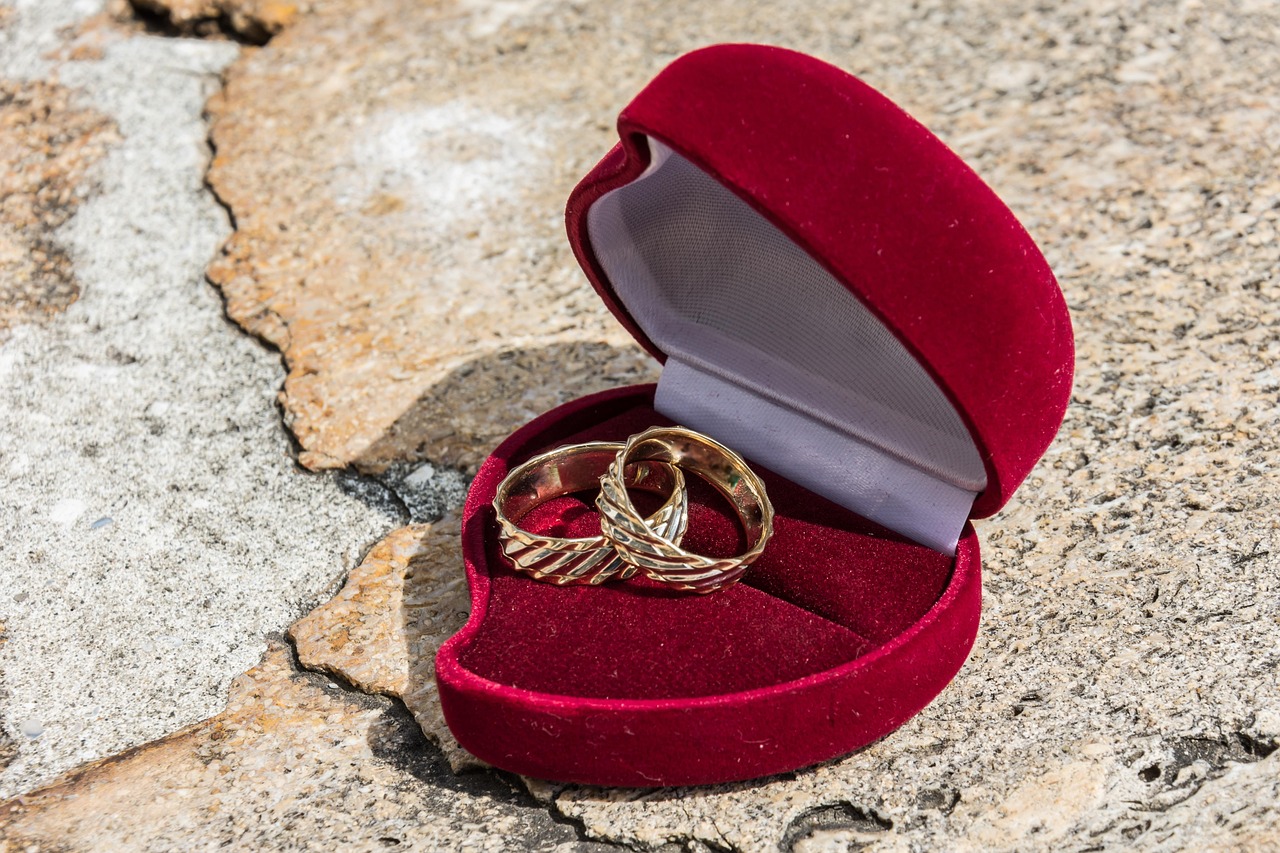
Modern Trends in Engagement Rings
In today’s world, engagement rings have become a vibrant expression of individuality, moving beyond traditional designs to embrace a variety of styles and materials. This shift reflects not only personal preferences but also evolving values in modern relationships.
- Diverse Gemstone Choices: While diamonds have long been the standard, many couples are now opting for alternative gemstones such as sapphires, emeralds, and moissanite. These stones can convey personal significance and often come with unique colors and meanings.
- Unique Settings: The setting of an engagement ring plays a crucial role in its overall appearance. From vintage-inspired halo settings to sleek modern designs, the choice of setting can dramatically change the ring’s aesthetic and personal touch.
- Vintage and Antique Styles: A growing trend is the appreciation for vintage and antique rings, which offer a sense of history and character. Couples are increasingly drawn to the craftsmanship and unique designs of past eras, making these rings a popular choice.
- Minimalist Designs: On the other end of the spectrum, minimalist rings have gained traction. Simple bands with subtle detailing can be both elegant and timeless, appealing to those who prefer understated beauty.
- Custom and Personalized Options: Many couples are choosing custom designs that reflect their unique love stories. Engraving meaningful dates or initials, or incorporating elements that symbolize their relationship, makes the ring truly one-of-a-kind.
Sustainable and Ethical Choices
As environmental awareness rises, many couples are prioritizing sustainability in their ring choices. This includes selecting ethically sourced diamonds or lab-created stones, which not only lessen environmental impact but also reflect a commitment to responsible consumerism.
Conclusion
The modern engagement ring is a canvas for personal expression, showcasing a couple’s values and style. As trends continue to evolve, these rings symbolize more than just a promise; they represent a unique journey of love and commitment shared between partners.
Sustainable and Ethical Choices
In recent years, there has been a significant shift in consumer behavior, particularly among couples looking for engagement rings. As awareness of ethical sourcing grows, many couples are now opting for sustainable engagement rings. This trend reflects a broader commitment not only to each other but also to the planet and its resources.
The rise of sustainable engagement rings is driven by a desire for transparency in the sourcing of materials. Many couples are increasingly concerned about the environmental and social impact of their purchases. They want to ensure that their choices do not contribute to environmental degradation or exploitative labor practices.
- Ethical Diamonds: Couples are now seeking diamonds that are certified as ethically sourced. This includes diamonds that are mined under fair labor conditions and without contributing to conflict.
- Lab-Grown Diamonds: Another popular option is lab-grown diamonds, which offer a more sustainable alternative. These diamonds have the same physical and chemical properties as mined diamonds but are created in a controlled environment, reducing their environmental footprint.
- Recycled Materials: Some jewelers are using recycled metals and gemstones to create unique rings. This practice not only minimizes waste but also gives new life to previously used materials.
The choice of a sustainable engagement ring signifies a couple’s values and priorities. It represents a commitment to a shared future that respects both their relationship and the world they inhabit. By choosing ethically sourced materials, couples can feel good about their purchase, knowing it aligns with their beliefs and supports responsible practices.
This trend is not just about aesthetics; it is about making a statement. Couples today are more informed and intentional about their choices, and they want their engagement rings to reflect their shared values. In this way, sustainable engagement rings are becoming a powerful symbol of love, responsibility, and a brighter future.
Custom and Personalized Designs
In recent years, there has been a noticeable shift in the way couples approach engagement rings. More couples are choosing custom engagement rings that not only symbolize their love but also reflect their unique relationship. This trend towards personalization adds a significant layer of meaning to the ring, transforming it into a truly one-of-a-kind piece.
Custom engagement rings allow couples to express their individuality and shared experiences. By incorporating personal elements, such as specific gemstones, designs, or engravings, each ring tells a story that is unique to the couple. For instance, a couple may choose to include a birthstone or a favorite color that holds special significance in their relationship. This level of personalization helps to create a deeper emotional connection to the ring, making it more than just a piece of jewelry.
Moreover, the process of designing a custom engagement ring can be a bonding experience for couples. It encourages collaboration and communication, allowing them to discuss their preferences and values openly. This shared journey not only enhances their relationship but also results in a ring that embodies their love story.
Another aspect of custom engagement rings is the opportunity for ethical sourcing. Many couples are now conscious of the environmental and social impacts of their purchases. By opting for custom designs, they can choose ethically sourced materials and gemstones, ensuring that their ring aligns with their values. This commitment to sustainability adds another layer of meaning to the ring, representing not just their love for each other, but also their love for the planet.
In conclusion, custom and personalized engagement rings are becoming increasingly popular as they offer couples a unique way to express their love and commitment. By choosing a ring that reflects their individual journey, couples create a lasting symbol of their relationship that is both beautiful and meaningful.
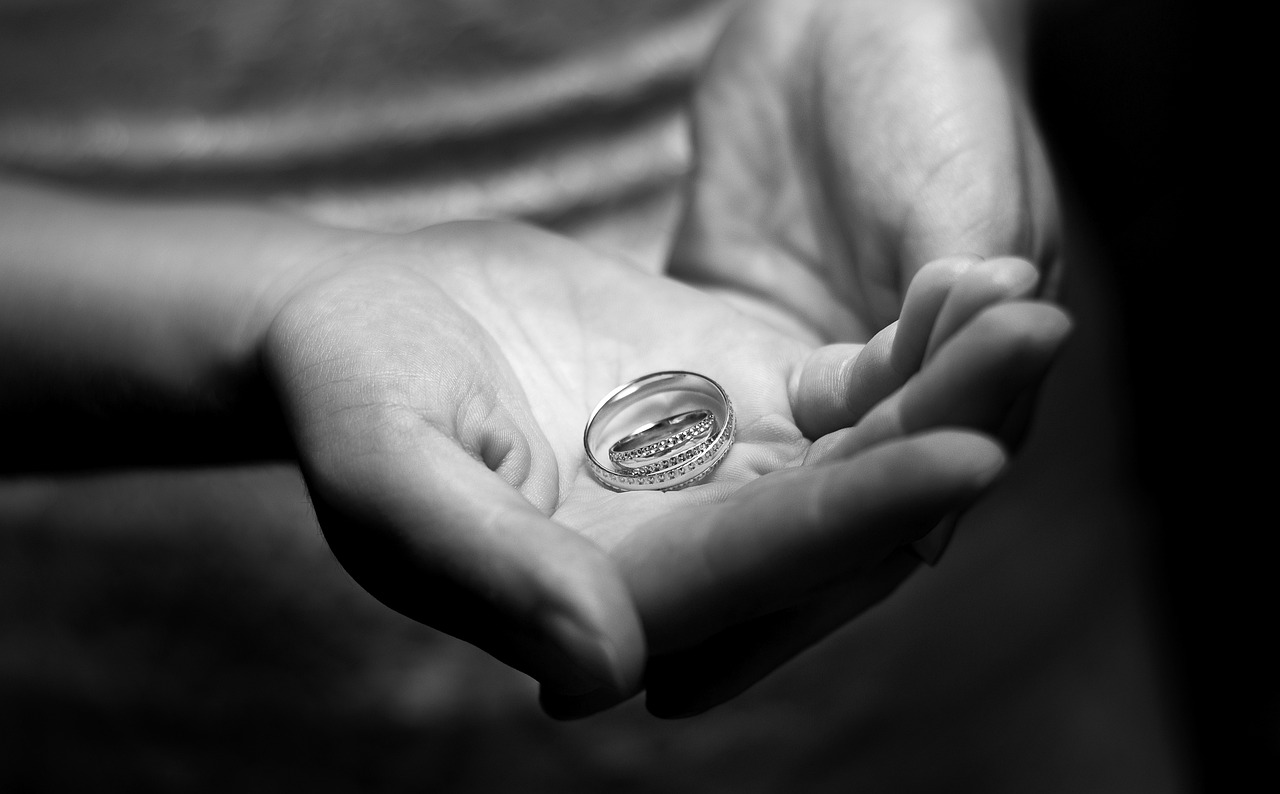
Conclusion: The Enduring Legacy of Engagement Rings
Engagement rings have transcended time and culture, serving as a powerful symbol of love and commitment. Their legacy is not only rooted in their physical beauty but also in the deep emotional connections they represent. Understanding the historical context and the evolving meanings of these rings can enrich our appreciation for this cherished tradition.
Engagement rings date back to ancient civilizations, where they were often made from simple materials like braided reeds or leather. The circle of the ring symbolizes eternity, a concept that has resonated through ages. As societies evolved, so did the materials and styles of engagement rings. From the iron and gold favored by the Romans, which represented strength, to the ornate designs of the Middle Ages featuring precious gemstones, each era has added layers of meaning to these symbols of love.
In modern times, the diamond engagement ring has become the most recognized form, particularly following the influential marketing campaigns by companies like De Beers. This shift not only established diamonds as the ultimate symbol of commitment but also shaped societal expectations around engagement rings.
Today, there is a growing trend towards sustainable and ethically sourced rings, reflecting a broader commitment to social responsibility. Couples are increasingly opting for custom designs that express their unique love stories, making each ring a personal emblem of their journey together.
In conclusion, the engagement ring is more than just a piece of jewelry; it is a profound symbol of love, commitment, and personal values. As we embrace modern trends and sustainable choices, we continue to honor the rich history and deep meanings that these rings hold in our relationships.
Frequently Asked Questions
- What is the historical significance of engagement rings?
Engagement rings have a rich history that dates back to ancient civilizations, symbolizing love and commitment. They evolved from simple bands to elaborate designs, reflecting cultural values and traditions over time.
- Why are diamonds considered the ultimate engagement ring stone?
Diamonds became synonymous with engagement rings largely due to a powerful marketing campaign by De Beers in the 20th century, which positioned them as symbols of eternal love and commitment.
- What do different gemstones symbolize in engagement rings?
Each gemstone carries its own unique meaning. For example, sapphires symbolize wisdom and loyalty, while emeralds represent rebirth and love. Choosing a gemstone can reflect a couple’s personal story and values.
- Are there modern trends in engagement rings?
Absolutely! Today, many couples are opting for sustainable and ethically sourced rings. Custom designs are also on the rise, allowing couples to create unique pieces that truly represent their relationship.
- What does the circular shape of an engagement ring represent?
The circular shape symbolizes eternity and unbroken love, which is why it’s a central aspect of the engagement ring’s significance in relationships.

